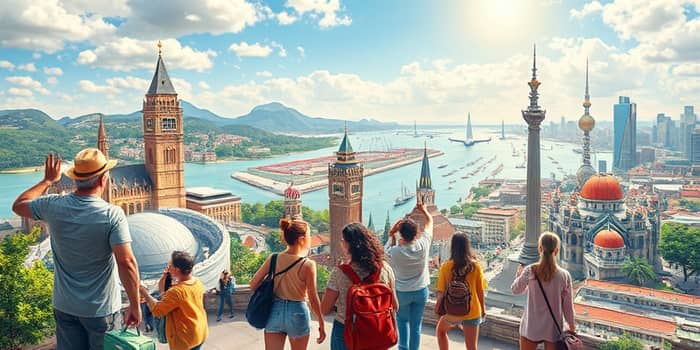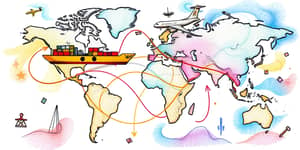
After years of uncertainty and closed borders, global tourism has rebounded with astonishing speed. As travelers rediscover the world, economies are revitalizing, cultures are reconnecting, and communities are thriving. The transformational power of international travel is now on full display.
In this deep dive, we explore the statistics and stories behind this resurgence and provide practical insights for governments, businesses, and travelers to sustain momentum and embrace responsible tourism.
The year 2024 witnessed a historic upturn, with an estimated 1.4 to 1.45 billion international tourist arrivals—reaching virtually 99% of pre-pandemic levels. This marks an 11% increase over 2023, which itself grew by 34% from 2022. Such rapid growth reflects both the lifting of travel restrictions and the release of pent-up demand.
As borders reopened and confidence returned, regions that acted swiftly led the charge. The Middle East surpassed 2019 numbers by 22% in 2023, while Europe, Africa, and the Middle East all exceeded their pre-pandemic tallies in 2024. The Americas came within 3% of 2019 figures, while Asia-Pacific trailed by 13% due to staggered reopening schedules.
This table highlights the top destinations leading the charge. France maintained its crown with over 100 million visitors, capturing around 8% of the global market. Japan’s arrivals surged by 47% in 2024 thanks to a favorable currency and enhanced connectivity.
Tourism’s resurgence is more than a numbers game; it underpins livelihoods and powers economies. In 2023, the sector contributed nearly $10 trillion to global GDP when combining direct, indirect, and induced effects. Travel and tourism revenue reached $1.4 trillion, matching 93% of 2019 levels.
This recovery supports over 300 million jobs across the supply chain—from frontline hospitality staff to transportation and tour operators. As visitor numbers rise, businesses face both the excitement of increased demand and the challenges of scaling operations sustainably.
Each region’s journey back to normalcy has its own narrative. Europe’s robust rail and low-cost airline networks accelerated its rebound, while the Middle East leveraged new attractions and major events. The Americas bounced back quickly in North America and the Caribbean, while some Latin American and South American nations charted innovative marketing campaigns to entice returnees.
In the Asia-Pacific, markets like Australia saw impressive upticks once borders fully reopened in early 2022. Island nations such as the Maldives, Fiji, and Sri Lanka are enjoying visitor levels 7–20% above pre-pandemic records, showcasing the enduring appeal of tropical getaways.
Despite the encouraging trajectory, the path forward involves navigating obstacles and seizing strategic opportunities. Key challenges include:
Yet these challenges also reveal opportunities for innovation. Embracing digital solutions, fostering workforce development, and prioritizing resilience can help destinations adapt and thrive in a dynamic environment.
To build on the momentum, stakeholders should focus on sustainable, responsible approaches. Consider these strategies:
Governments can facilitate recovery by streamlining visa processes, offering training programs for hospitality workers, and coordinating cross-border crisis response protocols. Private enterprises, meanwhile, should adopt flexible cancellation policies, diversify offerings, and engage with travelers to rebuild trust.
Modern travelers seek more than just sightseeing; they crave meaningful, immersive experiences. Notable behaviors shaping demand include longer stays, a desire for nature-based activities, and a preference for flexible booking options.
For those planning their next adventure:
The optimism surrounding international tourism is well grounded. Forecasts for 2025 predict arrivals exceeding pre-pandemic levels by up to 2%, driven by renewed confidence, evolving traveler aspirations, and strategic industry partnerships.
Success will hinge on collaborative efforts to reinforce healthcare readiness, maintain flexible policies, and champion environmental stewardship. With these pillars in place, tourism can remain a vital economic engine and a force for cultural understanding.
As we celebrate this remarkable resurgence, the collective challenge is clear: harness the power of travel to foster connection, drive inclusive growth, and ensure that future generations can explore the world with the same wonder we enjoy today.
References













